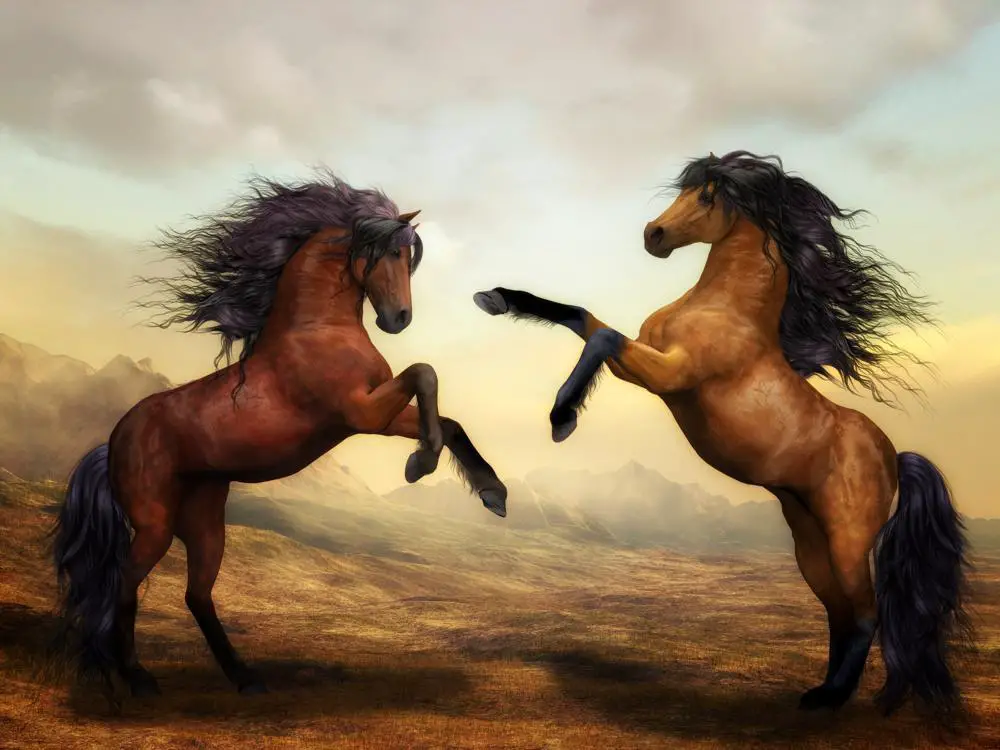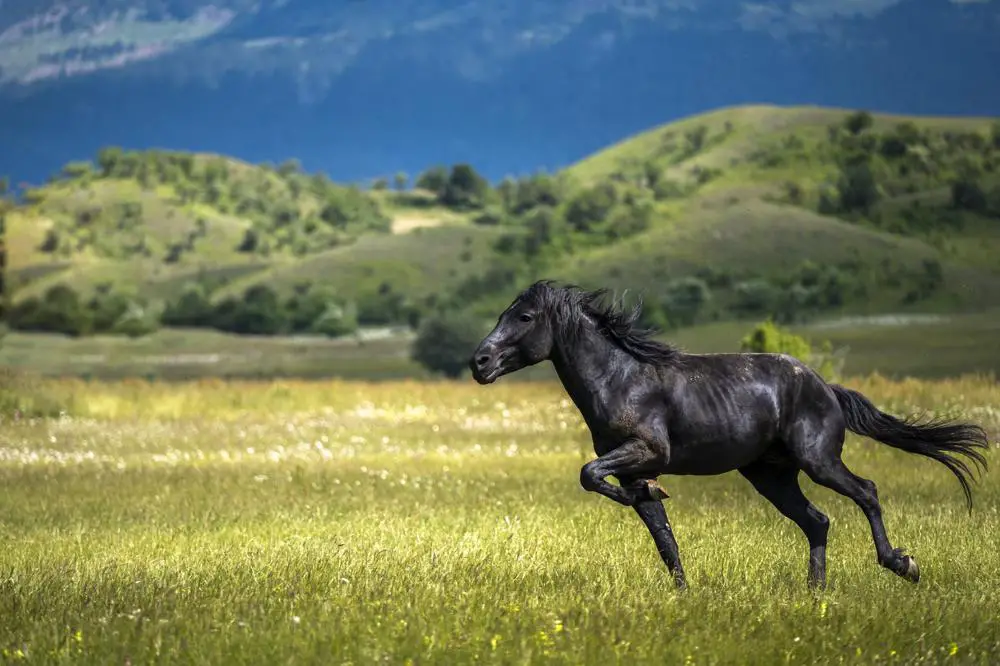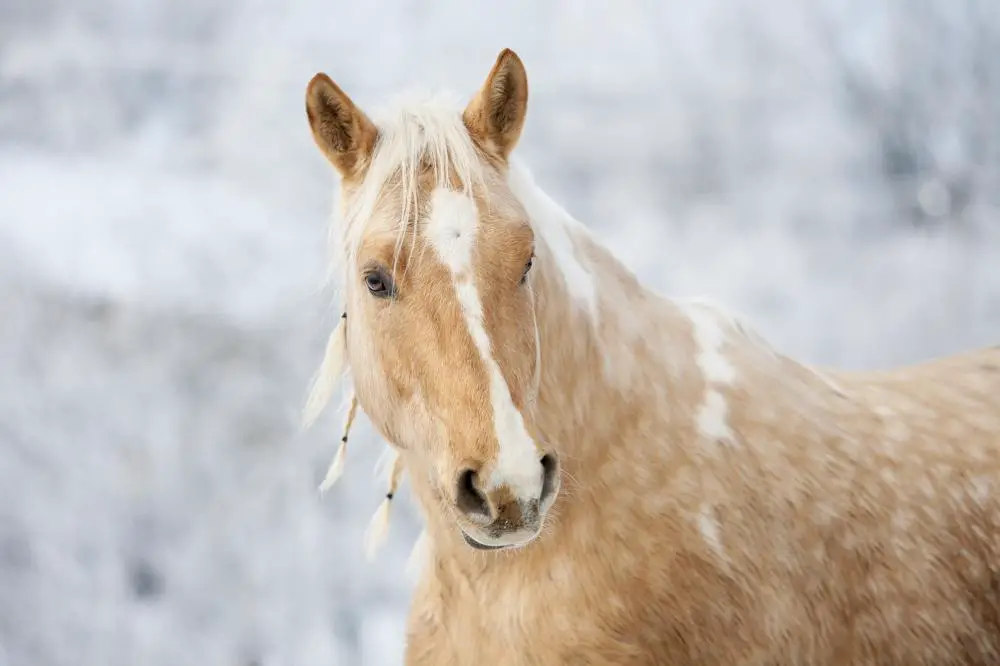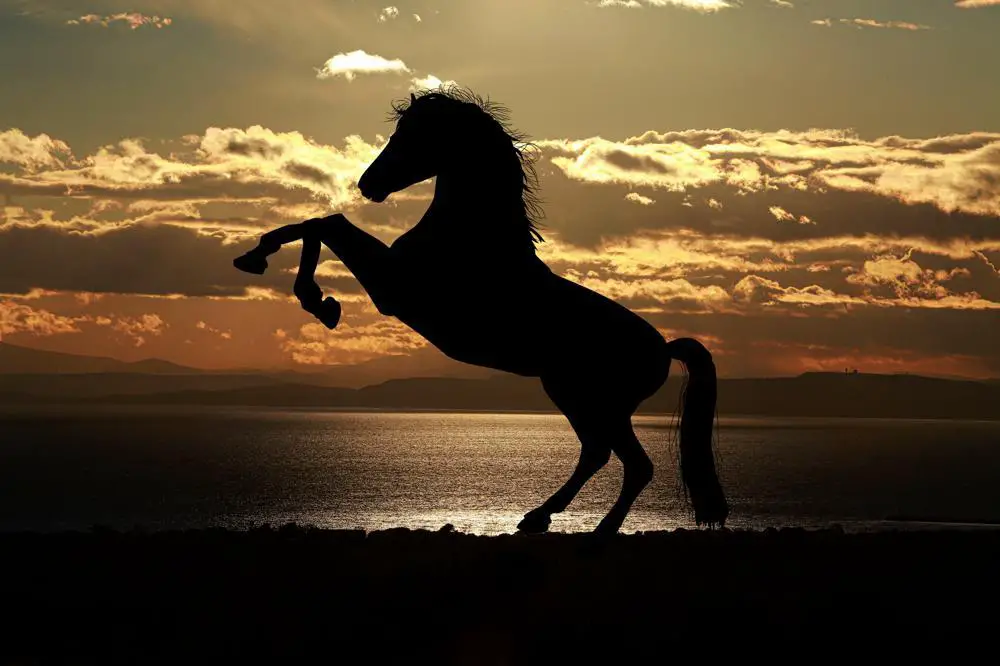
Is A Stallion A Breed Of Horse?
When it comes to horses, the term “stallion” is frequently used. Some people may think of it as its own breed, but is this accurate? The answer is no, a stallion is not a breed of horse, but rather a classification based on the horse`s sex.
In the equine world, stallions are male horses, typically over the age of three years old, that have not been castrated. They are known for their strength, agility, and impressive physical appearance. Stallions are often used for breeding purposes, hence their importance in the horse industry.
There are a wide variety of horse breeds that can produce stallions. Some well-known breeds include Arabians, Thoroughbreds, Quarter Horses, and Warmbloods. Each breed has its specific characteristics, such as height, color, and temperament.
Moreover, it`s essential to observe that not all stallions are created equal, and individual horses can vary significantly, based on their genetic makeup and early life experiences. Just because a horse is a stallion does not automatically mean it will be strong, fast, or a good breeding candidate.
In addition, while stallions are often associated with strength and power, they also require specialized management. Stallions can be aggressive, especially when they are in the presence of mares, and require special care to keep them healthy and safe.
In conclusion, while it`s understandable why some people may believe that a stallion is a breed of horse, it is actually a classification based on sex. Stallions can come from a variety of breeds and can vary significantly in their physical traits, behavior, and suitability for different activities. Therefore, it`s important to recognize the distinction and understand the specific characteristics of individual horses, regardless of their sex.

What Makes A Horse A Stallion?
A stallion is a male horse that has been physically and sexually matured. It is a term used specifically for domesticated horses and is considered as the most dominant and virile of all equine gender. Many characteristics and traits can define a stallion, and understanding them can help in properly identifying them.
One of the most noticeable physical traits in a stallion is his muscular build and sturdy stature. These horses have a well-developed neck, chest, and shoulders, making them strong enough to carry heavy loads and perform physically demanding tasks. Their height, too, is generally taller than the mares and fillies, and they can weigh up to 2,000 pounds.
Stallions also exhibit distinctive behavioral patterns and tendencies. They are territorial animals and often mark their space with their urine or feces. They can be aggressive towards other male horses, especially towards other stallions, as they try to assert their dominance. They also have a strong protective instinct, and their loyalty towards their herd is commendable.
Apart from these physical and behavioral characteristics, there are a few other requirements that a horse must meet to be considered a stallion. They must have their testes descended into the scrotum and actively produce sperm, making them capable of breeding with mares. They also have to possess a certain level of stamina, strength, and dexterity, a factor that is considered by many breeders when selecting stallions.
In conclusion, a horse becomes a stallion when it reaches physical and sexual maturity and exhibits certain characteristics and traits, including a muscular build and a strong territorial behavior. Identifying a stallion is essential for breeders and horse enthusiasts as they play a crucial role in sustaining the equine species through breeding. Understanding their unique characteristics and tendencies can help in building a better relationship with these magnificent animals.

How Is A Stallion Horse Different From A Normal Horse?
Stallions are known to be the pride and joy of the horse world. They are majestic creatures that demand attention and admiration from everyone around them. However, many people may not understand the true differences between a stallion horse and a normal horse.
Firstly, a stallion is a male horse that has not been castrated. This means that they have retained their reproductive organs and often possess highly dominant personalities. Stallions are also typically larger in size than their female counterparts and possess more muscle mass, giving them a more muscular and pronounced appearance.
In terms of their behavior, stallions are known to be more assertive, possessive, and territorial than other horses. This can often make them more difficult to handle and train, as they require an experienced handler who can effectively manage their strong-willed nature. It is important to note that if not socialized and trained properly, stallions can become dangerous and aggressive, especially around other horses.
Another key difference between stallions and normal horses is their breeding capabilities. Stallions are able to breed with mares and produce offspring, providing they have been properly trained for breeding purposes. In contrast, geldings, the term used for castrated male horses, are unable to breed and often have a more docile personality as they do not possess the testosterone levels of an intact stallion.
In conclusion, while there are several differences between a stallion horse and a normal horse, the key factors that set them apart are their size, behavior, and breeding capabilities. It is important for anyone who wishes to own or handle a stallion to be prepared for their strong-willed nature, as well as the additional responsibilities that come with breeding. With proper training and management, a stallion can be a valuable and rewarding addition to any horse lover`s life.

Are All Male Horses Called Stallions?
Horses are magnificent creatures that have been domesticated by humans for thousands of years. They are known for their speed, strength, agility, and their unique physical attributes that make them distinguishable from other animals. One of the most distinguishing features of a male horse is its gender, and the common belief is that all male horses are called stallions. However, is it true that all male horses are called stallions? Let`s dive deeper into this matter and find out.
Stallions are male horses that have not been neutered, also known as gelded. These horses are known for their dominant and aggressive behavior, and they are often used for breeding purposes. However, not all male horses are stallions. Male horses can be classified into three categories based on their age and their reproductive status- colts, geldings, and stallions.
Colts are young male horses that are less than four years old and have not reached sexual maturity. These horses are usually playful and are often used for riding purposes. Geldings, on the other hand, are male horses that have been neutered, and they cannot reproduce. Geldings are known for their calm and gentle nature and are often used for riding or work purposes. They are commonly used as riding horses for beginners since they are less aggressive than stallions.
Stallions, on the other hand, are the most dominant and aggressive of the three categories. These horses are sexually mature and are used for breeding purposes. They have a strong urge to mate and are known for their noisy and aggressive behavior, especially during the mating season.
In conclusion, not all male horses are called stallions. Male horses can be classified into three categories based on their age and reproductive status. Colts are young male horses that have not reached sexual maturity, geldings are male horses that have been neutered and cannot reproduce, and stallions are sexually mature male horses that are used for breeding purposes. Understanding the difference between these categories will help you care for and handle male horses more efficiently.

Can A Female Horse Be A Stallion?
The question that has long been asked and debated is whether a female horse can be a stallion. The short, simple answer to this question is no, a female horse cannot be a stallion. A stallion is defined as a male horse that is intact, meaning it has not been castrated. Females, on the other hand, are known as mares.
Mares and stallions have distinct physical and behavioral differences that separate them from one another. Unlike stallions, mares do not have a penis or testicles. Instead, they have a vulva and ovaries. They also do not produce testosterone in the same way that stallions do. Testosterone is responsible for many of the physical and behavioral characteristics that define a stallion, from their muscular build to their aggressive tendencies.
The idea that a female horse could become a stallion may stem from the controversy surrounding the term “gender identity” in humans. However, this term cannot be applied to animals as they lack the cognitive awareness required for gender identity. Gender identity is a complex psychological concept that involves a person`s perceived identification with a particular gender. Horses do not have the capacity for such self-awareness or the ability to identify with a specific gender.
In conclusion, it is clear that a female horse cannot be a stallion. The physical and behavioral differences between the sexes are stark and well-defined, making it impossible for a mare to possess all the characteristics that define a stallion. While some may argue for gender identity in animals, it is not a concept that can be applied to non-human species such as horses. It is important to stick to scientific facts and avoid anthropomorphizing animals.

What Is The Difference Between A Stud And A Stallion
When it comes to discussing horses, two words that are often used interchangeably are “stud” and “stallion.” However, while both animals are male horses, there are fundamental differences between the two.
A stud is a male horse that has been selected for breeding because of its pedigree, physical traits, performance, or a combination of these factors. It is a term often used to describe a horse used for breeding purposes and is usually kept for this sole purpose.
On the other hand, a stallion is an uncastrated male horse, and it has the reproductive anatomy necessary for breeding. Stallions can be used for breeding but can also be used for showing, riding, and other equestrian activities.
In terms of characteristics, studs are typically chosen for their specific desirable traits that can be passed on to their offspring. These traits could be related to breed, conformation, athleticism, or temperament. Once a stud has been identified, it is then carefully bred with selected mares to produce desirable offspring.
In contrast, stallions are not necessarily selected for their breeding abilities but are typically chosen for their potential in competitive events and riding experiences. Stallions can be used for breeding, but they also require extensive training, and only a few are selected to pass on their genes.
In addition, studs are typically kept in facilities designed specifically for breeding. They are given a controlled environment, with a carefully maintained diet, housing, and medical care. Stallions require a similar level of care, but they are usually kept in locations where they can be used for other activities besides breeding.
While both studs and stallions are male horses, their primary purposes differ. Studs are selected for breeding purposes, while stallions are chosen primarily for their competitive performance. The selection and maintenance of studs are more focused on their reproductive abilities, while stallions require more intensive training and conditioning to succeed in high-level equestrian activities.
In conclusion, the difference between studs and stallions is not just based on their reproductive abilities but their primary purpose, selection, care, and management. If you`re looking to breed a horse, you would select a stud; if you want a proven competitive male horse, you could select a stallion.





